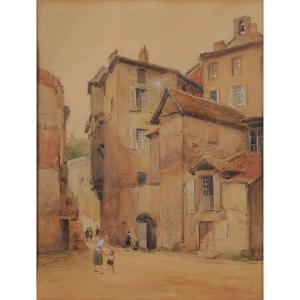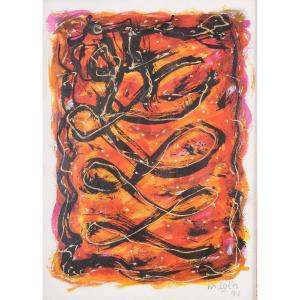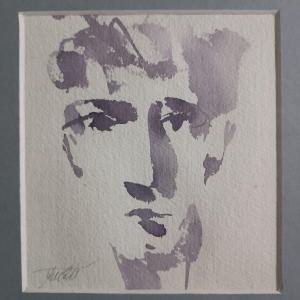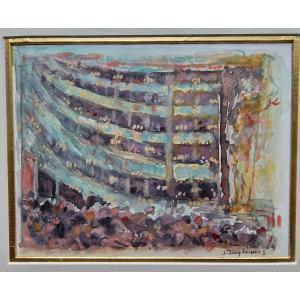(Brantôme 1885 - 1958)
Mill and castle of Rognac
Watercolor
H. 23 cm; L. 31 cm outside frame
Signed, located and dated lower left
Provenance: Private collection, Périgord
Robert Dessales-Quentin was born in one of the most beautiful villages in France: Brantôme, nicknamed the Venice of Périgord, since it is located on the banks of the Dronne, a river which has become a natural defense by encircling the town. This small town in the north of Périgord was the playground throughout the artist's life. At four years old, he completely lost his hearing following treatment that was unsuitable for his intolerance to quinine, which was unknown at the time. His father, a notary from Brantôme, decided to quickly send him to Paris where he would study at the National Institute of Deaf Mutes. Aware of his artistic tastes, his parents had him enrolled at the Jullian Academy, in the workshop of the famous Jean-Paul Laurens. A man of taste and terribly attached to his land. Dessales-Quentin easily turned to landscapes rather than history painting to which his studies predestined him. It is in Périgord that he will quickly return and find his way in the representation of local heritage. Castles, beautiful residences, churches and city views were presented in 1909 at the Salon des Artistes Français in Paris. It was in watercolor that he was most comfortable, even obtaining a Grand Honorable Mention at the Salon in 1928, a rare occurrence for this medium. In oil he will have several different periods and styles, in particular a period that could be called "wisteria", due to the recurring presence of this plant between the two wars in his paintings. A drawing teacher for more than fifteen years at the great Saint-Joseph de Périgueux Institution, and in his studio on rue du Plantier, he was named by his students the "genius left-hander". It is also within this workshop that Dessales-Quentin welcomed the “all of Périgord” each year for an extremely anticipated exhibition of his works. Accustomed to old Périgord stones, he will not abandon "elsewhere". Corrèze will be a land of recurring passage, but also the Basque Country, both French and Spanish. He will exhibit his works in many French cities, traces of which we find very regularly through the well-known labels on the back of the watercolors and their original frames.
This view of Rognac by Dessales-Quentin follows that which we have already presented, by Pasquet in 1893 and Prugent around 1930. The point of view is similar to the compositions of the other painters, taken from the other bank de l'Isle from where you can see the succession of the mill and the tower of the castle standing out from it. Gradually abandoned, the mill in the foreground, whose bases date from the 16th century, is today reduced to the state of walls collapsing with humidity. These gradually join the beautiful mansard roof and the watchtowers now in the course of the river. Classified as a Historic Monument since 1945, like the castle, these places located in the town of Bassillac deserve today a courageous rescue.
































 Le Magazine de PROANTIC
Le Magazine de PROANTIC TRÉSORS Magazine
TRÉSORS Magazine Rivista Artiquariato
Rivista Artiquariato